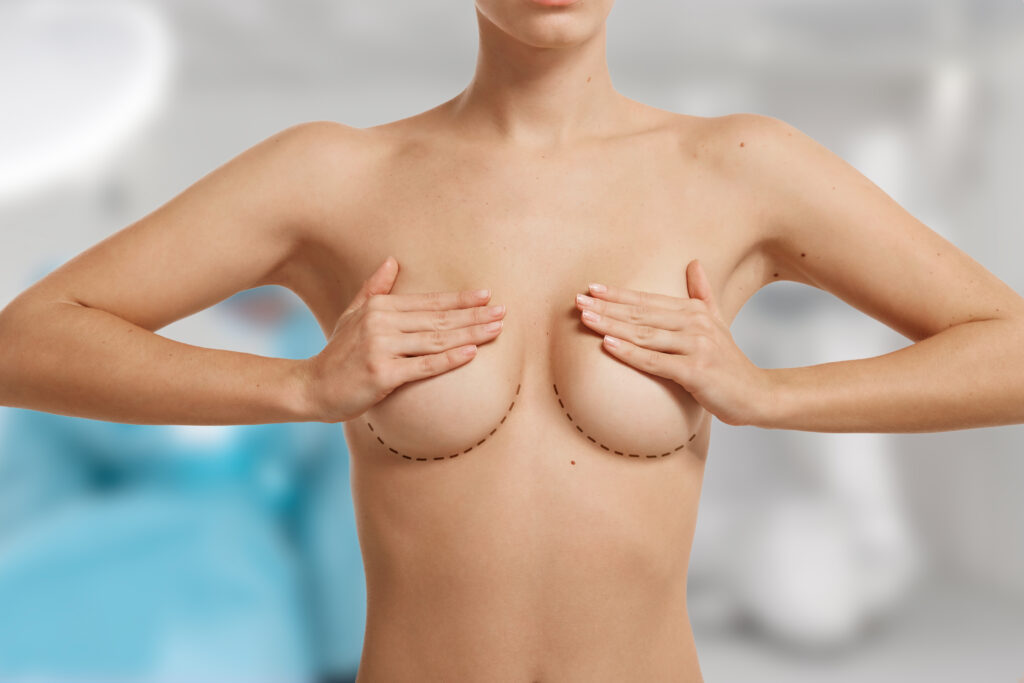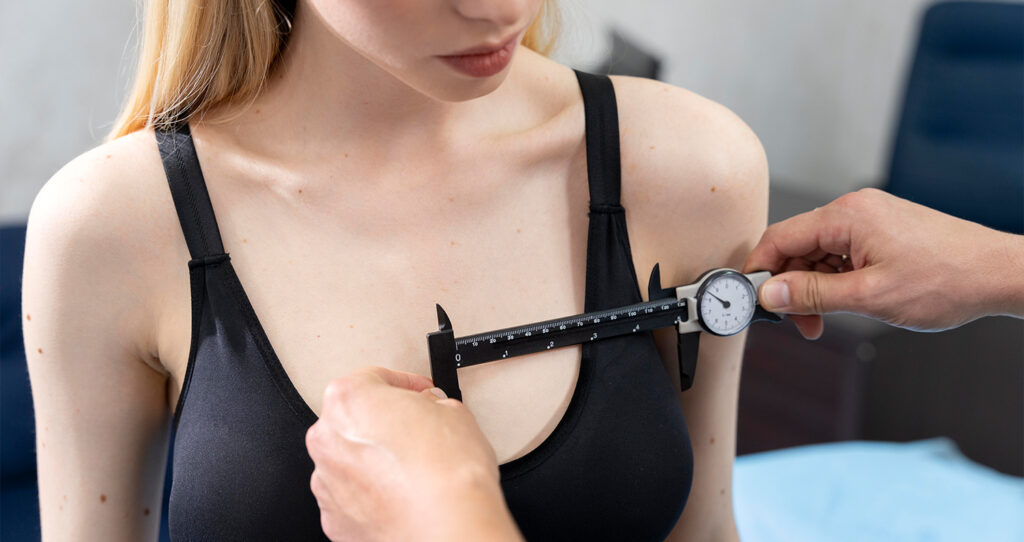Who has never dreamt of being young forever? While aging is still irreversible, esthetic medicine came up with many treatments which help to save fresh and attractive appearance for longer. Botox is probably the most common among them.
Forehead lines are the first signs of aging you might notice on the face. The forehead is involved in many facial expressions, starting from surprise to frowning. Moreover, environmental factors, sun exposure, and stress result in the early development of the lines. So, there is no surprise, that forehead botox has become a regular procedure for millions of people around the world and attracts more patients every year.
Despite botulinum toxin injection being so widespread, there is a lot of biased information on the Internet that relies on old standards, personal assumptions, and myths.
To give you only reliable and trustworthy information about forehead botox we wrote this article in tight collaboration with Dr. Tatiana Kobets, a dermatologist with 18 years of experience with botulinum toxin injection. She is an owner of the esthetic clinic and a regular participant in international conferences about botulinum toxin injection.
What is forehead botox?
Botulinum toxin is a neurotoxin that blocks transmission between neurons and muscles. In the normal state, the edges of neurons release some mediators to induce muscle contraction. After the injection, the toxin blocks the release and relaxes the muscles.
The interesting fact is that botulinum toxin was discovered for esthetic medicine by chance. It was used to treat some ophthalmologic conditions when doctors noticed that it smooths out wrinkles around the eyes. Since then, the story of botulinum toxin as a cosmetological procedure has begun.
Forehead botox injections are used to smooth out horizontal and vertical lines and folds between the eyebrows. The doctor injects the toxin with a thin needle into the forehead muscles to relax them.
You should understand that botox injections cannot treat all types of wrinkles. On the face, we have two types of lines: dynamic and static.
- Dynamic wrinkles are caused by muscle movements, so botox injections are effective for treating them.
- Static wrinkles occur due to the loss of collagen and skin elasticity during aging. For them, botox should be combined with other treatments to restore the lost volume.
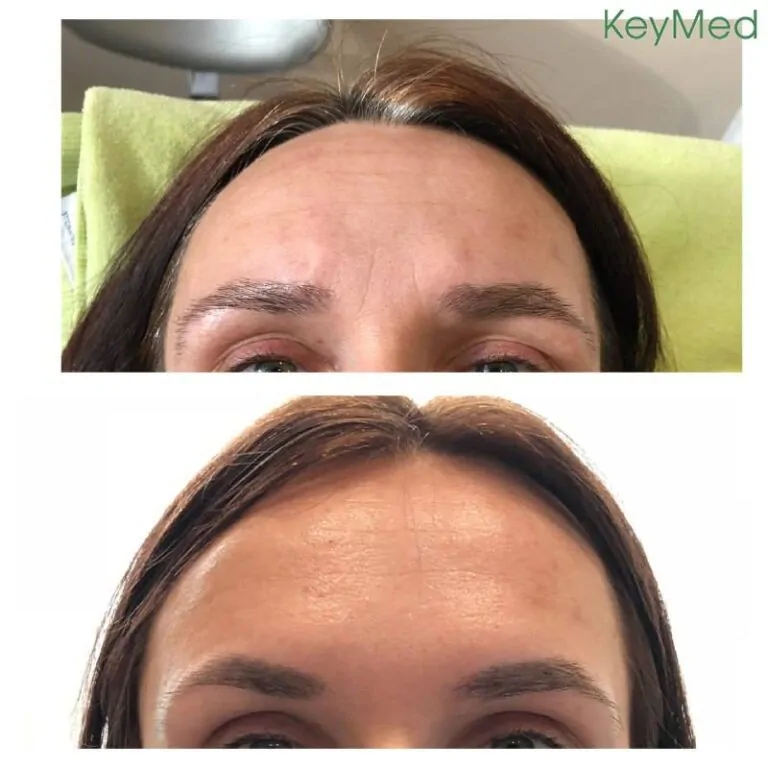
Source: KeyMed
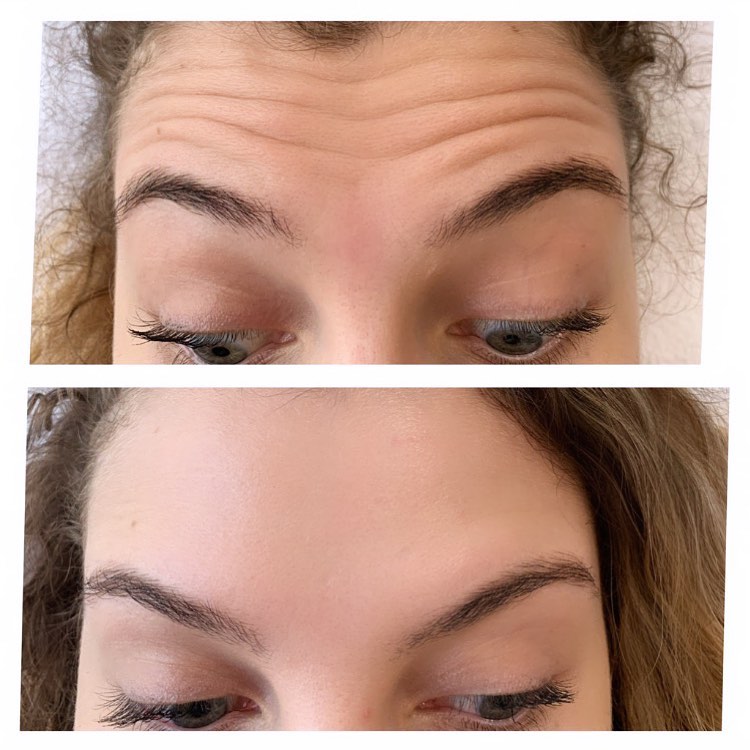
Source: KeyMed
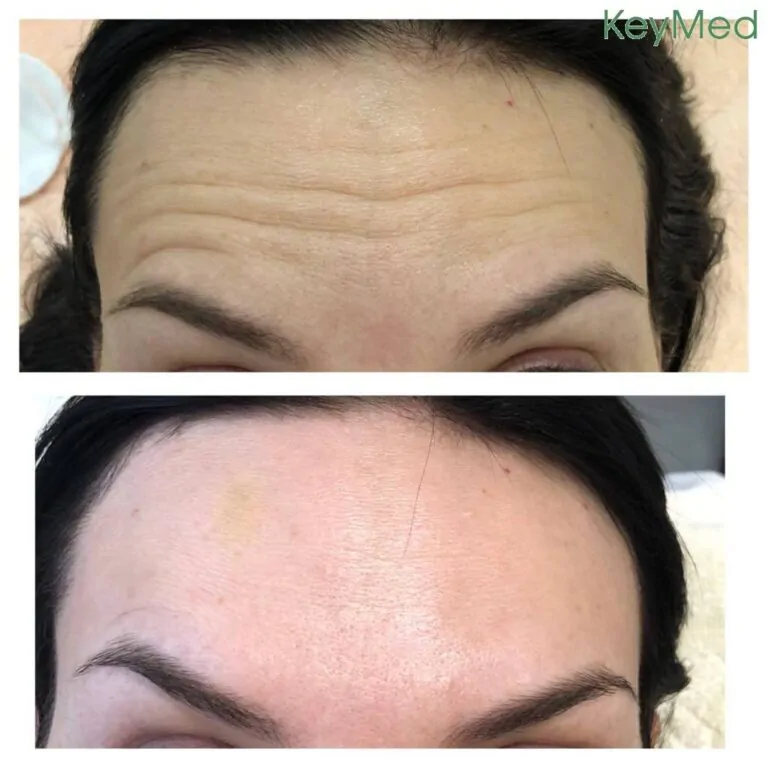
Source: KeyMed
Is forehead botox right for you?
You might need forehead botox regardless the age, so it can be either in your 20s or 40s. The main indication of the procedure is the appearance of wrinkles.
As for most procedures, forehead botox has a list of contraindications:
- Skin inflammation in the treatment area
- Infections
- Pregnancy or breastfeeding
- The age under 18
- Exacerbation of the chronicled diseases
- Allergy to the botulinum toxin (extremely rare)
- Myasthenia gravis or Lambert-Eaton syndrome
Forehead botox has many advantages compared to other anti-wrinkles procedures:
✅ Fast effect from the first procedure
✅ Long-lasting effect for up to 6 months
✅ Preservation of the mimic movements, unless you don’t want to achieve a mask-like face
✅ Fast procedure that takes up to 15 minutes
✅ Easy rehabilitation process.
Forehead botox: treatment procedure
If you are wondering how the procedure is performed, here is a detailed description. Keep in mind, that depending on the location or clinic the set of the steps can be different.
If it is your first time visiting a cosmetologist, the primary consultation will take most of the time. You may discuss with the doctor the following topics:
- Previous botulinum toxin injections and treatment areas (if there were any).
- Any medication and dietary supplements you take daily.
- Any regular procedures you need to do (maybe some special treatment).
- Whether you plan surgery in the nearest 2-3 months. General anesthesia washes off the botulinum toxin effect.
- Whether you recovered from botulism or got a shot of vaccine against it.
- Treatment zones. Specialists don’t recommend treating different zones in separate sections because it may negatively influence the efficiency of further procedures. So, plan treatments in advance.
In most cases, you will get the botulinum toxin injection in the reclining position. Specialists have to account for muscle structure and placement before making injections in the forehead. A doctor will ask you to move your face (raise your eyebrows, frown, etc).
The doctor marks the sites of the injection with a pen and starts the injection. The procedure itself lasts up to 15 minutes. To administrate the botulinum toxin a doctor takes a small sterile syringe with a thin needle.
Are injections painful? Well, they are unpleasant, but the pain is manageable. Imagine, that you get a mosquito bite, that is quite the same. In most cases, there is no need to apply any numbing cream, because the procedure is fast. Still, if you are sure that your pain threshold is low, you may ask a doctor to apply some anesthetic cream.
The amount of botulinum toxin is measured in units. For example, the average amount for forehead treatment ranges from 4 to 20 units, while elevens (wrinkles between eyebrows) require 15-25 units.
Occasionally, you will need to attend a follow-up procedure. For example, if the botulinum toxin effect is uneven. In this case, the doctor will inject additional doses of botulinum toxin into the particular sites to solve the issue.
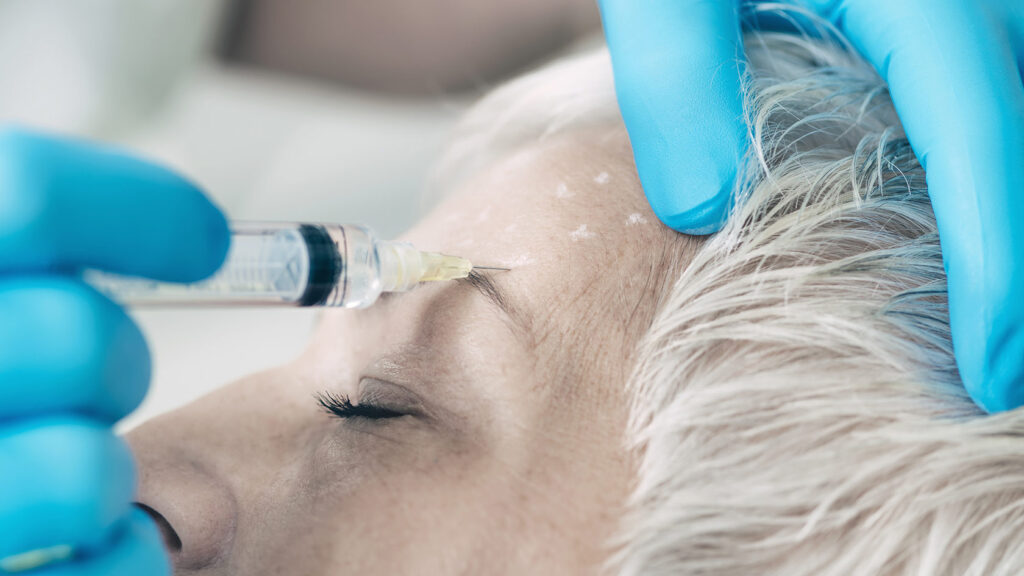
The recovery period after forehead botox
One of the advantages of botulinum toxin injections is that there is no recovery period after the procedure. Some people even book a procedure during lunch break and return to the work afterward.
Bury in mind, that you won’t see an impressive effect immediately. You will definitely notice some improvements from the first day. However, it takes up to 14 days to get the final results.
After the first treatment, the result will last from 3 to 6 months and will slowly wear off during this period returning mobility to the muscles.
Even though the procedure has no recovery period, there are some rules to follow to get better and long-lasting results.
Restriction after the procedure
You should avoid drinking alcohol 24 hours before and 48 hours after the treatment. This will help your organist to recover faster from the procedure and prevent bruising.
You should exclude intensive sports activities during the first day of the procedure. However, some mild activities like yoga or stretching are welcome.
Another restriction is regarding vitamins from the B group. These dietary supplements were shown to decrease the length of the effect.
Also, you shouldn’t touch, massage, and scratch injection sites to prevent infection.
Avoid all heat procedures like a sauna or sunbathing for two weeks after the procedure.
What can go wrong with forehead botox?
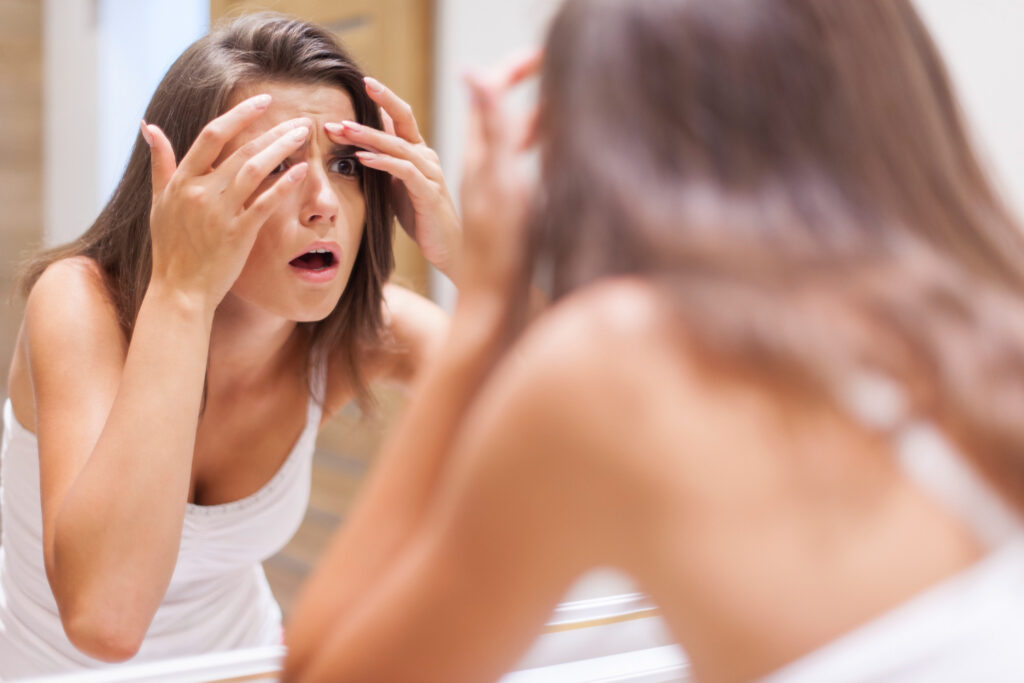
Forehead botox is a safe procedure with a limited list of side effects.
Just after the procedure, you might see small pimples in the injection sites, however, they will disappear during the hour after the treatment.
For the first two weeks, you may notice bruising, painful sensations, and swallowing in the injection sites. Another possible side effect after forehead botox is a headache or flu-like symptoms that pass during a couple of days.
Very rarely botulinum toxin can defuse beyond the forehead injection site causing unexpected muscle weakness, changes in vision and vision problems, and difficulty in swallowing.
The mild side effects include ptosis of the eyelid or eyebrow and Spock’s eyebrow. While many clinics recommend just waiting a couple of months until these side effects wear off we propose solutions to them.
How fix the unwanted botox results?
There is no need to panic after noticing some asymmetry or ptosis. In most cases, the situation is manageable.
Spock’s eyebrow
It is an effect when the tail of the eyebrow is lifted unnaturally.
Our forehead is built with different muscle groups: depressors and elevators. If elevators of the outer half of the forehead get undertreated, it results in the raise of the eyebrow.
This side effect is easy to treat. The specialist just makes one injection above the curve to relax the muscle and flatten the eyebrow.
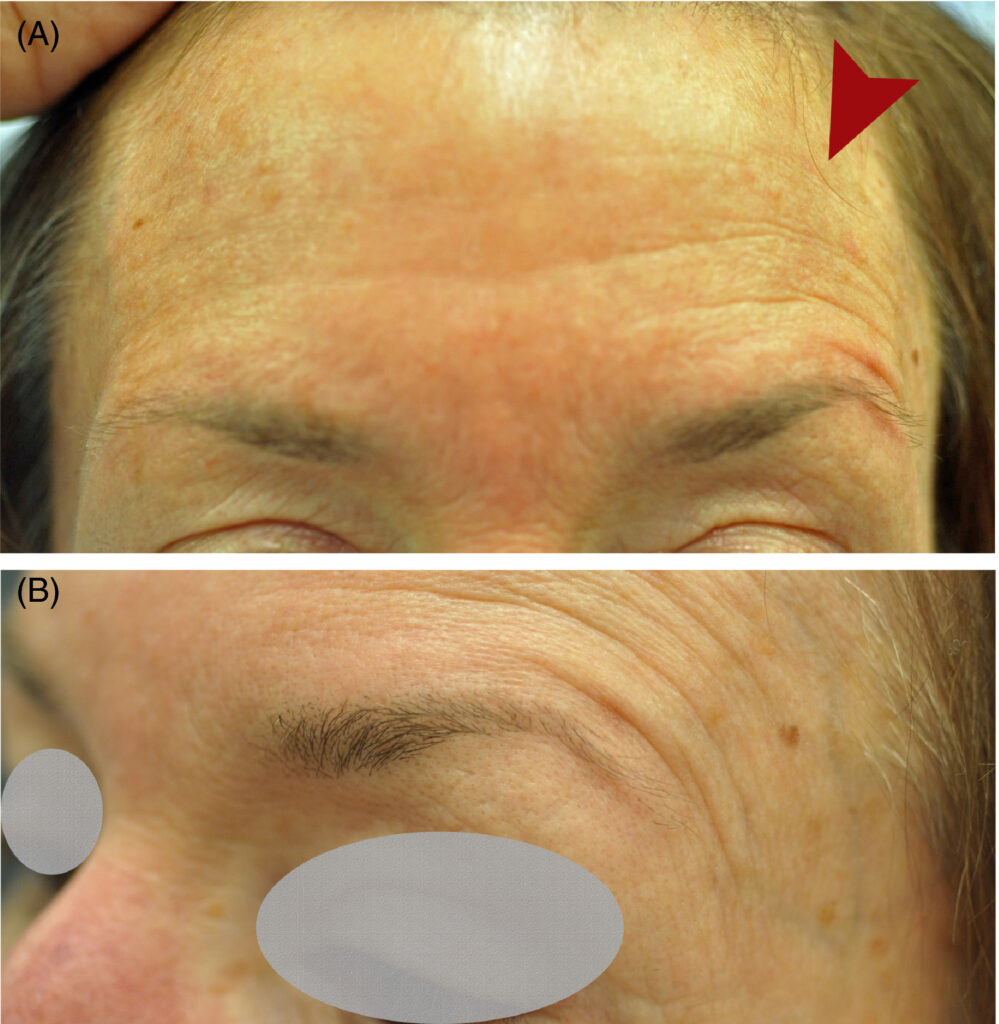
Dropped eyelid or eyebrow
These side effects are not that straightforward to treat, but still, manageable. The secret here is to do the opposite of the botulinum toxin effect. It means you need to actively stimulate forehead muscle contractions.
The list of possible treatments includes:
- Massage
- Microcurrents
- Facial lifting
2-3 in-office procedures during a couple of weeks will return you the previous look. However, it is even possible to treat unwanted ptosis at home. There is a range of devices for face contouring and lifting on the Internet. Consistent everyday treatment for 3-4 weeks will also give you a perfect result.
Summary
Botulinum toxin injection into the forehead is the most common treatment to get rid of wrinkles in this area. With the procedure, you can treat both horizontal folds and vertical lines between the eyebrows (known as “11”). Forehead botox best works for dynamic wrinkles which formed as a result of facial movements.
Forehead botox is a safe procedure that has limited side effects and contraindications. The latter include pregnancy, breastfeeding, some neurological conditions, inflammation, and infection. Despite the procedure having some side effects, they are usually temporary and manageable to fix if needed.
The procedure has no recovery period. After the treatment patient needs to follow some restrictions to avoid potential side effects like bruising or ptosis.
FAQ
👀 What to expect from forehead botox?
Botulinum toxin injection for the forehead relaxes the facial muscle. As the muscles cannot contract it prevents the skin from folding. As a result, it smoothes out the dynamic and light static horizontal and vertical wrinkles on the forehead.
😊 What to do before forehead botox?
The only restriction you should follow beforehand is to avoid alcohol for 24 hours before the procedures. We also recommend booking a consultation with a doctor before going to the procedure itself. Botox is usually a final step that fixes the result achieved with other procedures like fillers, lifting, etc. With a doctor, you will develop a treatment plan to satisfy your beauty goals.
⏰ How long does forehead botox last?
Forehead botox results last from 3 to 6 months depending on the individual features. The final result you will see on the 7-10 days following the procedure.
👵 When to start botox forehead?
There is no defined age for the forehead botox. The procedure has the main indication which is the appearance of facial wrinkles. You can get notice them either in your 20s or 40s. If you are not sure whether you need the botulinum toxin or not we recommend booking an appointment with an experienced specialist to discuss the possible treatment.
✨ Why does the forehead look shiny after botox?
It means that one received too much botox during the procedure. As a result, the skin got fully smooth and bounces light off like a mirror.

![Should You Have a Forehead Botox? Doctor’s Review [2023]](https://bellezie.com/wp-content/uploads/2023/05/Should-You-Have-a-Forehead-Botox-Doctors-Review-1024x683.jpeg)

